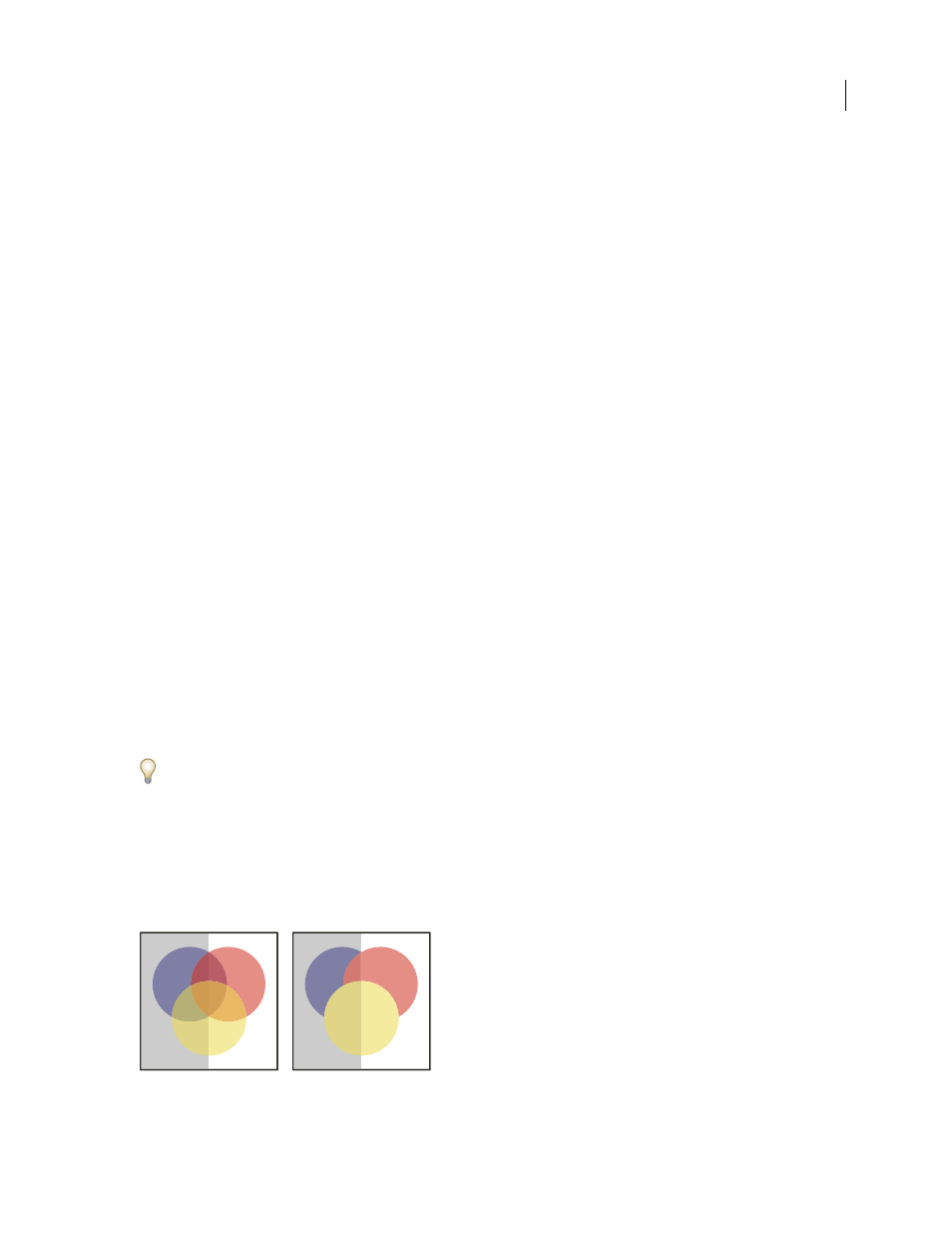View transparency in artwork, Change the opacity of artwork – Adobe Illustrator CS3 User Manual
Page 180

ILLUSTRATOR CS3
User Guide
174
See also
“Workspace overview” on page 14
Show all options in the Transparency panel
❖
Choose Show Options from the panel menu.
Show a thumbnail of the selected object in the Transparency panel
❖
Choose Show Thumbnail from the panel menu. Or, click the double triangle on the panel’s tab to cycle through
the display sizes.
View transparency in artwork
It’s important to be aware of when you’re using transparency, because you need to set some extra options when
printing and saving transparent artwork. To view transparency in your artwork, display a checkered background grid
to identify transparent areas of your artwork.
1
Choose View
> Show Transparency Grid.
2
(Optional) Choose File > Document Setup, and select Transparency from the menu at the top of the Document
Setup dialog box and set grid options.
Note: You can also change the artboard color to simulate what your artwork will look like if printed on colored paper.
Change the opacity of artwork
You can change the opacity of a single object, the opacity of all objects in a group or layer, or the opacity of an object’s
fill or stroke.
1
Select an object or group (or target a layer in the Layers panel).
If you want to change the opacity of a fill or stroke, select the object, and then select the fill or stroke in the
Appearance panel.
2
Set the Opacity option in the Transparency panel or Control panel.
To select all objects that use a specific opacity, select an object with that opacity, or deselect everything and enter the
opacity value in the Transparency panel. Then choose Select > Same > Opacity.
If you select multiple objects in a layer and change the opacity setting, the transparency of overlapping areas of the
selected objects will change relative to the other objects and show an accumulated opacity. In contrast, if you target
a layer or group and then change the opacity, the objects in the layer or group are treated as a single object. Only
objects outside and below the layer or group are visible through the transparent objects. If an object is moved into
the layer or group, it takes on the layer’s or group’s opacity, and if an object is moved outside, it doesn’t retain the
opacity.
Individual objects selected and set to 50% opacity (left) compared to layer targeted and set to 50% opacity (right)